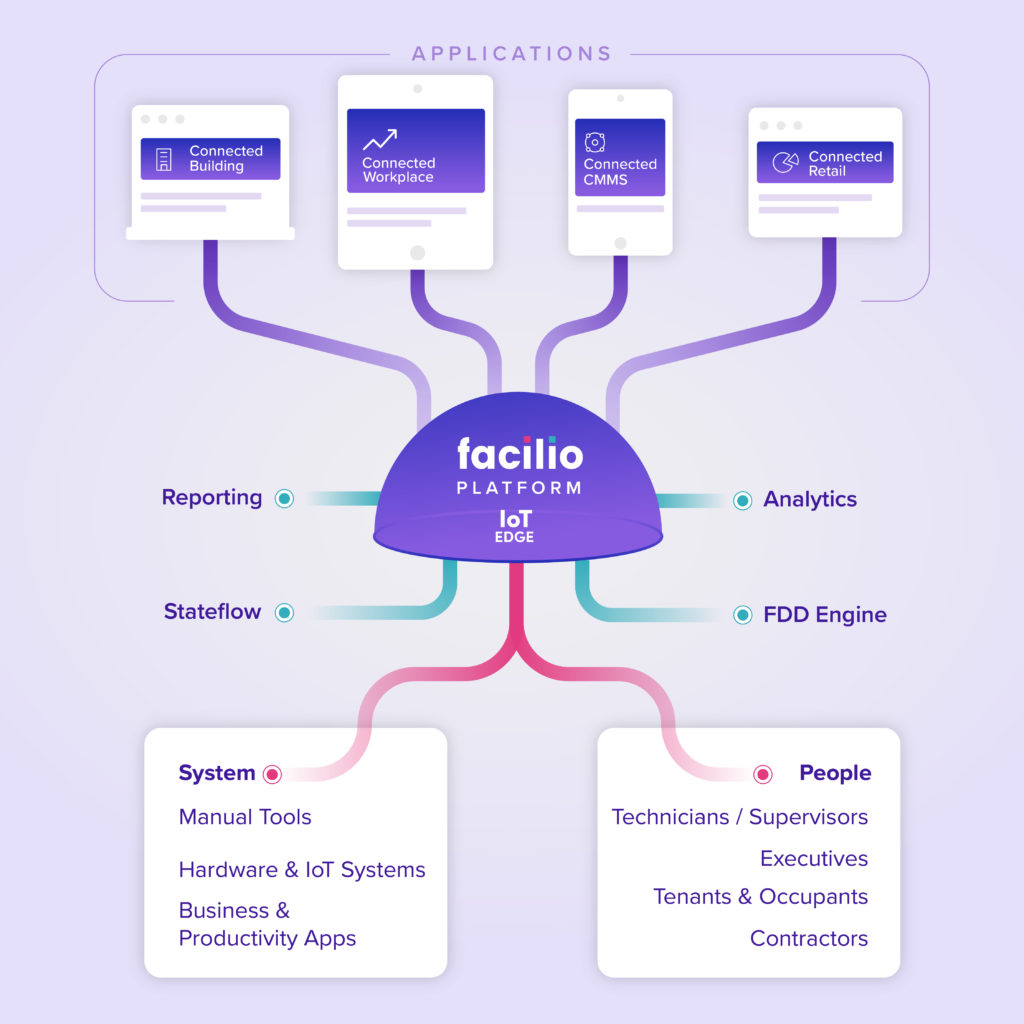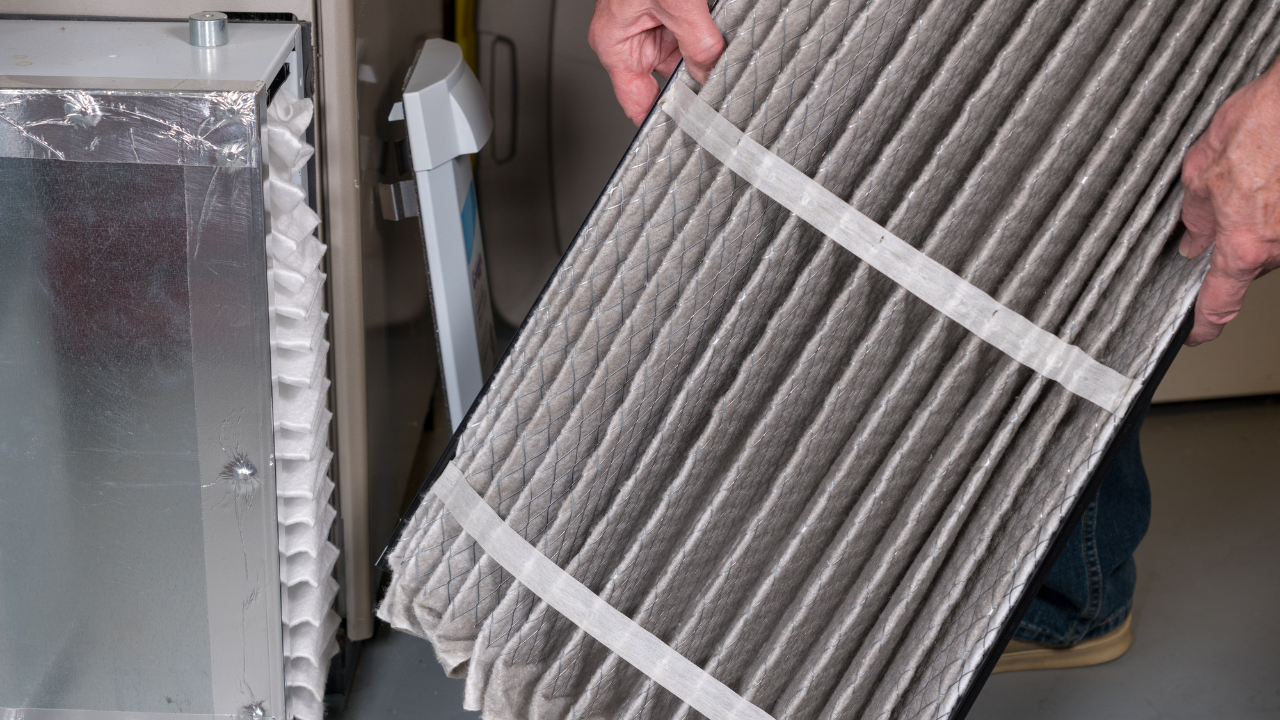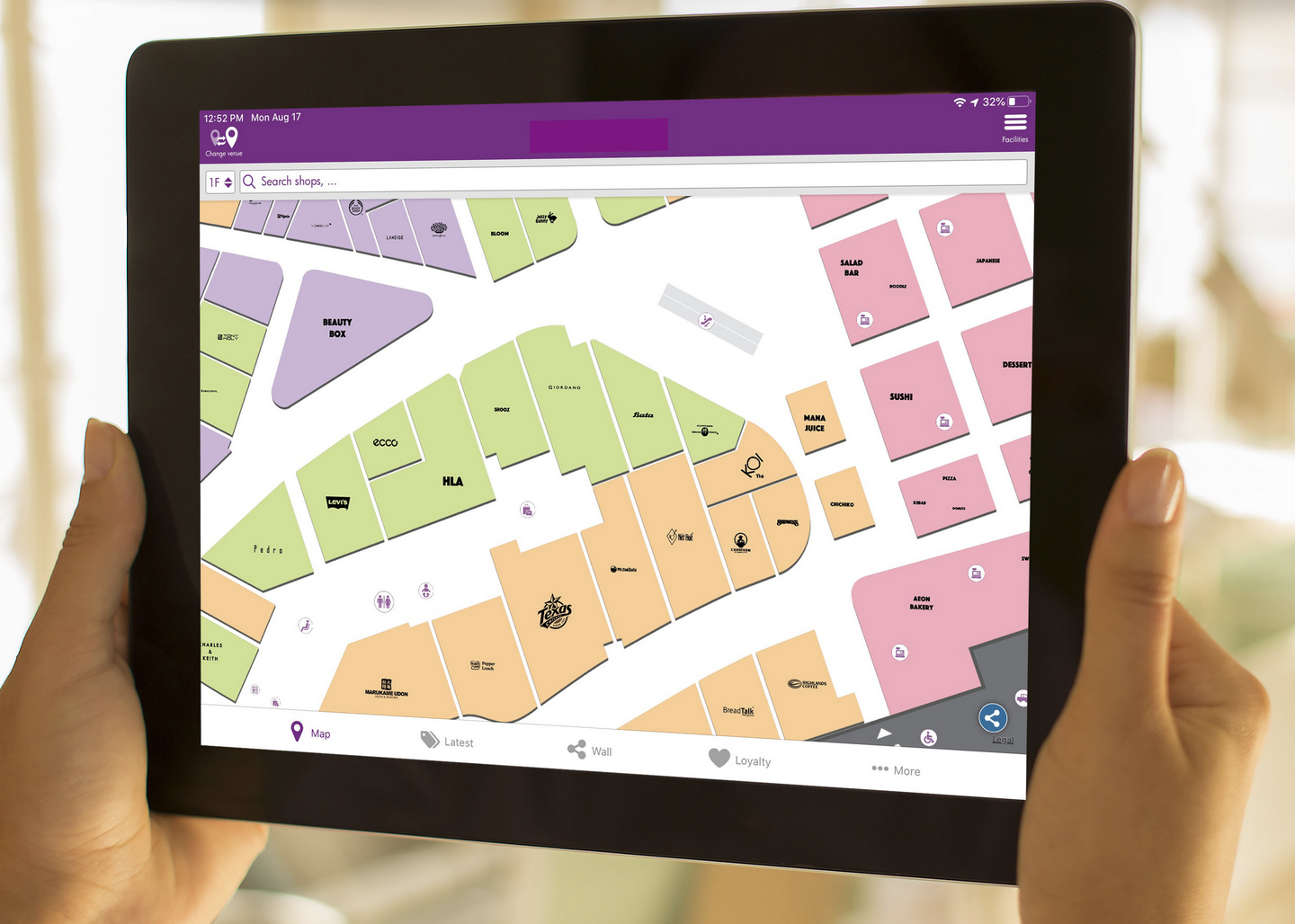How a Platform Approach Can Transform Your Building Operations
Rajvel Subramanian, Co-founder and Head of Product at Facilio
Posted 11/16/2022
The Computerized Maintenance Management System (CMMS) was initially designed to solve one key O&M problem: maintenance management. The CMMS tool allowed building operations teams to raise work orders, create maintenance routines, and manage asset repositories.
For everything else that cascaded from core maintenance, operations teams used external tools. So, they had one tool each for vendor management, procurement, inventory, accounting, etc. This created too many silos — functional, systems and building silos — which also scattered data across. It resulted in teams spending too much time juggling between multiple systems. They also lost a lot of valuable context between the cracks of these silos. Over time, O&M became a lot more complex than it needs to be.
As the world moved towards more diverse portfolios, digital buildings, IoT and no-touch customer interactions, building operations teams demand more. They want:
- A unified tool where all activities such as asset, vendor, tenant, inventory, purchase order, and financial management can be performed from a singular interface
- End-to-end visualization of operations, giving granular visibility across all KPIs in real-time
- Intuitive applications that are easy to use for all stakeholders
- Automation and optimized workflows that reduce manual efforts
- Flexibility and scalability that enable their business to be agile
This requires a radically new approach to the CMMS. It needs to accommodate the various variables, demanding stakeholders, scaling businesses and dynamic markets.
Platform approach to the CMMS
The perfect solution for the problems with present-day CMMS is a platform approach. A CMMS built using a platform approach works like a quiver full of business capabilities, integrated to form a valuable whole. It works as follows.
Modular components focus on business needs. Unlike an off-the-shelf product, a platform is made of modules that allow you to leverage the functions you need. Platforms make it easy for businesses to create a customized solution built with a combination of modules that’s right for them.
Flexible platforms power scalability. The modular nature of platforms means that you can always add the features you need later. Moreover, today’s platforms are built on modern cloud infra, enabling you to add users or functions as and when needed.
The platform model is designed for interoperability. The platform model, by design, is interoperable, enabled through APIs and IoT-based integrations. A robust platform can seamlessly connect with external apps and systems to orchestrate multiple functionalities through a single point.
Platforms leverage data. A good platform’s biggest value is bringing together data from multiple siloed tools to enable a holistic view of the entire landscape in real time.

How does platform approach transform building operations?
A platform approach to CMMS effortlessly brings together every aspect of property operations and maintenance (O&M) to enable efficiency, cost savings, customer experience, and data-driven decision-making. Here’s how.
Single-point O&M management
A CMMS built following a platform approach will have all functionalities needed for property operations, such as maintenance management, vendor management, service management, visitor management, audit and compliance, finance and accounting, sustainability benchmarking, etc. It enables seamless integrations with external tools without large investments in technology or human resources.
With a strong CMMS platform, operations teams don’t need to jump between various tools, products, and apps to perform every daily task. This not only makes them more productive, efficient, and less prone to errors but also creates a better employee experience, freeing them from the frazzle of wasteful activity.
Stellar stakeholder experience
Traditional CMMS is designed for the technician. A modern CMMS is designed for every stakeholder—operations, vendors, tenants, and occupants. The platform approach allows the creation of user-focused apps for each stakeholder, where they can perform the tasks they need. For instance, an occupant app will enable them to raise service requests, track status, receive notifications about events, interact with other occupants, etc.
Automation and process streamlining
Despite using a CMMS tool, most operations teams have a wide array of spreadsheets they manage to track activities. Depending on the size of the building and the complexity of operations, these spreadsheets can run into thousands. Often, these spreadsheets are not even standardized, which means that various teams have the same data in different formats, spending significant manual effort in finding the simplest of information.
A good CMMS platform can eliminate this entirely. To begin with, operations teams can streamline their workflows and create them on the CMMS platform to standardize processes. Post that, each team member can update information, which is automatically made available to whoever needs it.
Take, for example, a simple maintenance activity workflow. An occupant raises a service request on the app. The operations team is automatically notified of this. They then create a work order and assign it to a vendor, who is automatically notified. The technician accepts the work and schedules a visit. When s/he visits, the ops teams are notified in the visitor management module, where they approve the technician’s entry. When the work is complete, the technician updates the status on their app, which is automatically notified to the ops team, who can close the service request. The occupant gives feedback, which the tenant and building executive teams can view for strategic decisions.
Scalability
Modern platforms are cloud-based, offering high availability and unlimited scalability. You can seamlessly add any number of users or buildings to your CMMS, who will be onboarded instantly. If you need to remove users or buildings, that’s just as seamless too.
Democratizing data
A great CMMS platform is also an excellent analytics platform. It brings together data from multiple disparate sources to build a holistic view not just of the building operations but of the entire portfolio itself.
- Executive teams can have granular data of their operations in real-time and gain meaningful insights
- Tenants can see data about occupant experience and identify opportunities for improvement
- Operations teams can have a single-pane view of all activities, statuses, and challenges. They can also get a comparative analysis of vendor performance, NPS scores from occupants, upcoming compliance deadlines, etc.
- Vendors can have a clear view of their upcoming tasks and runway
As you can see, a platform approach is more than just ‘integrations.’ Because the best integrations are akin to stitching the finest materials together to make an outfit. The real question is: Does that outfit fit you right?
At Facilio, we’ve built the Connected CMMS to answer precisely this question. It is unified, modular, streamlined, customer experience-driven, scalable, and powered by robust data capabilities. It is designed to be a CMMS platform that fits you right — for your business needs, operations processes, stakeholders, and budgets.
Would you like to see how that might look for your portfolio? Book a demo of the Facilio platform today.

Rajvel Subramanian
Raj Subramanian is part of the founding team and heads product strategy at Facilio, an AI-driven property operations platform that allows real estate owners to aggregate building data, optimize performance, and control portfolio operations – all from one place. He is passionate about using cloud technology to make operating large portfolio-wide real estate facilities across geographies easy and efficient. He is a regular speaker at various industry forums where real estate owners congregate to learn about how technology can transform their property operations and improve their bottom lines. Prior to Facilio, he led product management of the telecom & IoT product portfolio during his 10 yr stint at Zoho.
Related Articles

Engineered Building Maintenance

Achieving "Near Zero" Refrigerant Emissions in HVAC Systems

HVAC Attack - How to Select the Right HVAC Filter for the Job

How Building Managers Can Save On Energy Purchasing Through Changing Paradigms

What Is Facilities Management? Challenges, Solutions, & More




